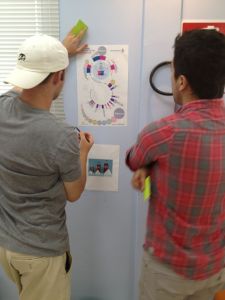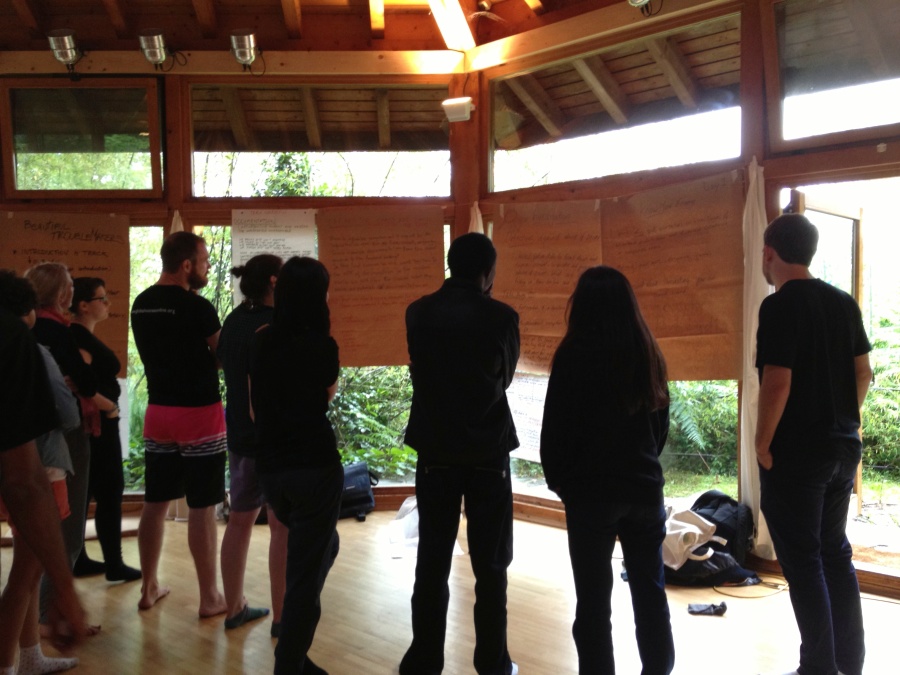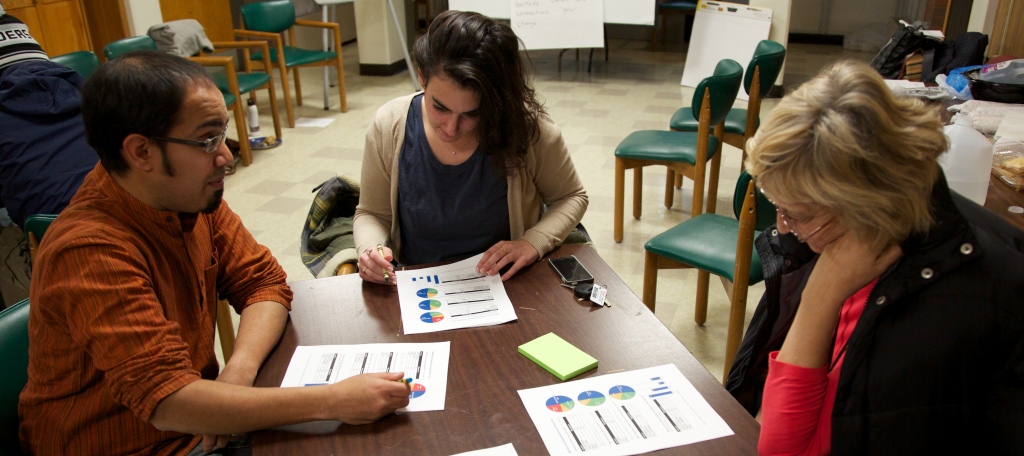I was recently invited to give a Skype keynote for the first hackathon hosted by the state of Minas Gerais in Brazil. The talk was a wonderful provocation to revisit the writing of another Brazilian I used to study – Paulo Freire and his vision of popular education. This led me to wonder… what would a model of “popular data” look like? Answering this requires an agreement that there is a problem, and agreement that the problem merits a popular education approach. This post is an exploration, so I end by proposing a few grounding principles for a concept of “popular data”. Is this a useful concept?
The Problem
Governments large and small are speaking of open-data platforms and data-informed decision making. They share with us a vision of responding to citizen concerns more accurately and efficiently based on data. These governments are using the language of data. Data is a language governments are speaking, but most people don’t understand. This is the core problem that I address with my Data Therapy project.

Can Popular Education Help?
If you don’t speak the language used by your government to make decisions, then you can’t participate in those decisions. This disempowers people, and popular education is an approach for rectifying disempowering situations. The city I live in, Somerville, MA, has a a program called “ResiStat” that is intended to
bring data-driven discussions and decision-making to residents and promote civic engagement via the internet and regular community meetings
This data-centered effort can only engage those that already understand the charts, graphs, and terms they use. Don’t get me wrong – they don’t deliver a dry academic lecture at their community meetings. However, they do rapidly run through reams of data analysis with an expectation that most in the audience can handle the information-centered explanation. This leaves out the many residents who don’t speak data at all.
What is Popular Education?
Philosophical definitions are always debated, but here are a few guiding principles most practitioners of popular education would adhere to:
- participation from all parties
- learner guided explorations
- facilitation over teaching
- accessibility to a diverse set of learners
- focus on real problems in the community
If you consider this list a litmus test for governmental data programs, few (if any) would pass. So how do we change this?
Popular Data?
Now that you’re (hopefully) on board with my problem statement, and the idea that popular education can help, lets play out how. Popular data is my name for engaging, participatory approaches to data-driven presentation and decision-making. Not a great name, but from an academic point of view it puts my work in the right family tree so I’ll use it for now. How do you structure data programs to practice popular data? Lets run through each of the tenants listed above and look at some examples.
Participation from All Parties
Popular Data suggests a “big tent” approach; you should get everyone at the table. For instance, far too many open-data initiatives end at the release of the data. The smart ones realize they are the scaffolding for larger efforts, and make a strong effort to convene non-profits, constituents, and the data makers to the table in order to encourage activity around the data. Sometimes this looks like a hackathon that makes sure to invite lots of segments of society (ie White House hackathon). Sometimes this looks like a presentation of results back to the people the data is about (ie. Somerville’s ResiStat meetings). There are lots of ways to involve those in power positions and those outside of them.
Learner Guided Explorations
Most data presentations are about as engaging as a conversation with your dentist! You kind of have to do it, but it’s booooring. Flipping the model invites your audience to find their own stories in the data. My Data Murals work does just that – our initial “story-finding” workshop shares a small portion of the data about a topic and then lets teams of participants find stories they want to tell. Participants own these stories and advocate for them. That is an empowerment story – our evaluations show people come away feeling more capable of finding stories in data, and are less intimidated by data in general.
Facilitation Over Teaching
In my Data Therapy workshops I use a number of activities for building visual literacy. All of these are ways to facilitate a discussion of data presentation, and build a shared language for describing data. When data scientists introduce ideas they too often fall back on big words. These words alienate those who haven’t studied data. My first step is to use language a normal person would use. Then I help the group construct their own language for describing data, which they fully understand.
Accessibility to a Diverse Set of Learners
I spent years designing interactive museum exhibits. Museums are the hardest setting I’ve ever designed for. At a museum you know nothing about your audience; your object has to support 30 second interactions with a single person, but also 1 hour interactions facilitated by a knowledgeable docent. This is hard. Really, really hard. Data presentations and activities need to be designed the same way. I address this by starting simple, and building to complexity. In data presentations I do break into small groups and seed each with one person that does speak data to help the other folks understand technical issues.
Focus on Real Problems in the Community
This one is easy! Make the data you are working with or presenting relevant to the communities you are working with. In the workshops I lead in the Boston area, I use the Somerville happiness survey as my silly example data set. I wouldn’t do that for a group of public health wonks (I’d use something from the WHO). People are naturally inclined to be engaged about the community they live in – no need to introduce data from some far off community they have no relation to.
Is this Useful?
Ok, so I’ve made my argument – I see every dataset as an opportunity for engagement. Engagement with the public, the people the data is about, the people whole collected it, everyone. If you’re reading this, it’s up to you to use a Popular Data approach to seize the opportunity for engagement a dataset gives you. I find this framework useful for structuring my data presentations and workshops. Let me know what you think! Am I just naming something obvious? Am I being too academic?
crossposted to my Civic Media blog











 Attendees pondering which of the awesome sessions to attend after the morning circle.
Attendees pondering which of the awesome sessions to attend after the morning circle. The large paper encouraging people to come join our curation & influence track.
The large paper encouraging people to come join our curation & influence track.









You must be logged in to post a comment.